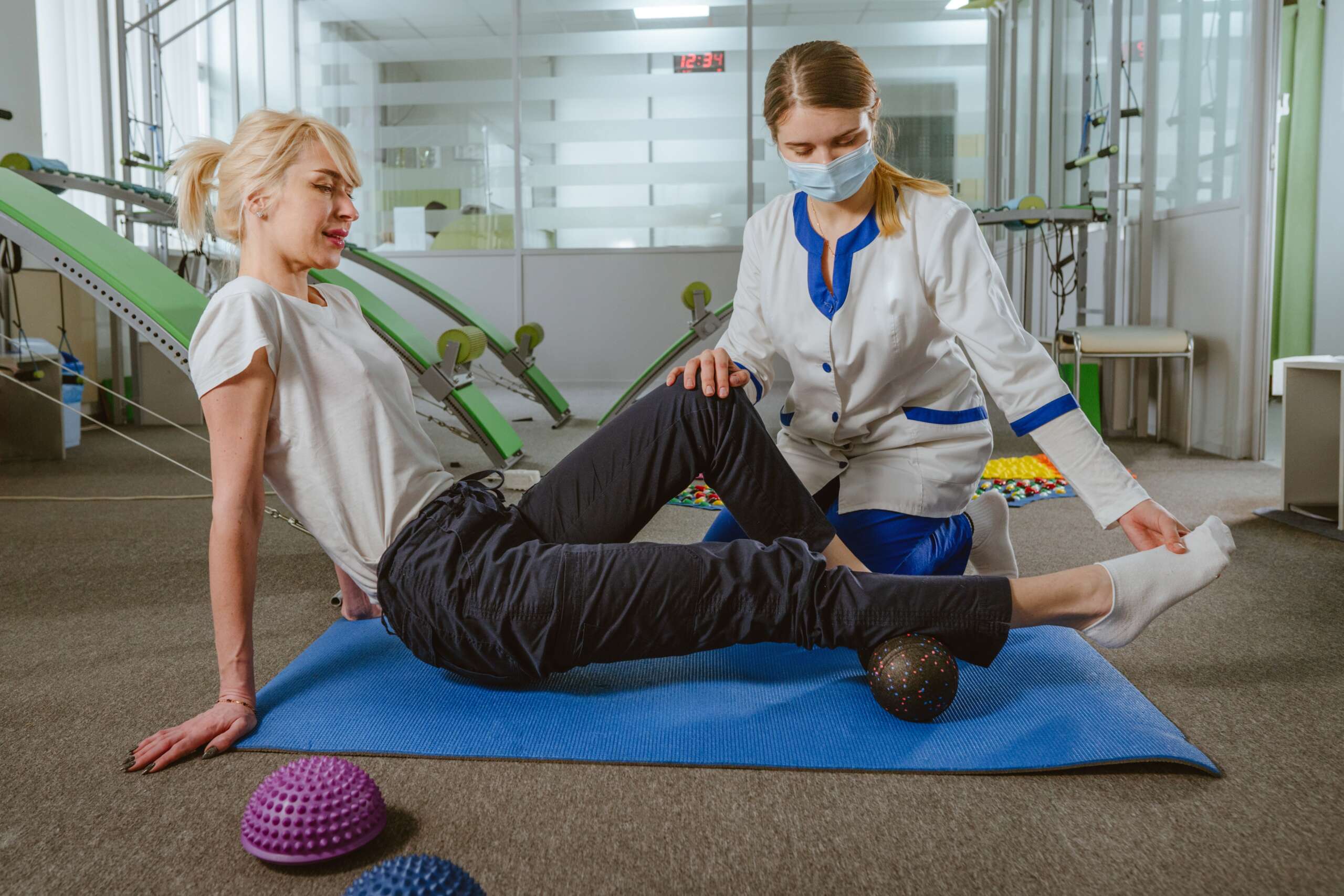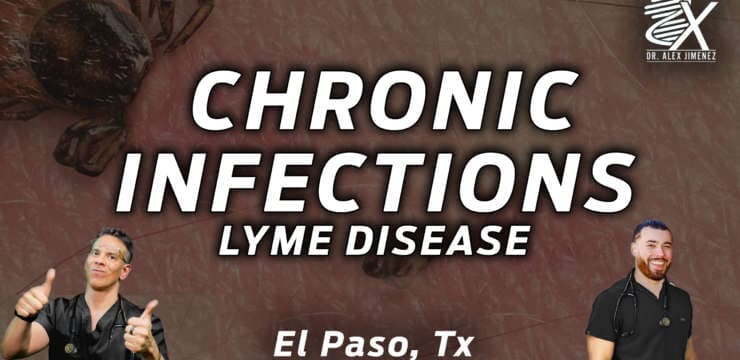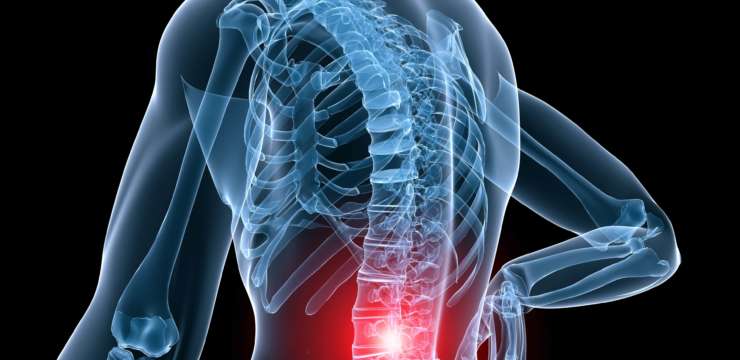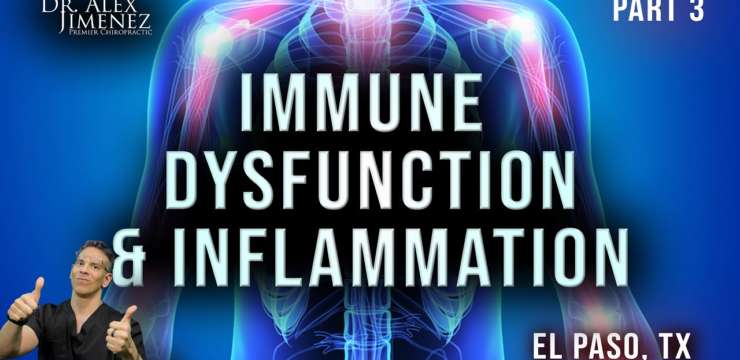
Understand the role of physical therapy in treating auto injuries and whiplash to promote improved healing and overall well-being.
Table of Contents
Introduction: Whiplash and the Road to Recovery
Picture this: you’re driving along, singing to your favorite tune, when—bam!—a car rear-ends you, and suddenly your neck feels like it’s been through a rollercoaster ride. Welcome to the world of whiplash, an injury that’s as sneaky as it is painful. Whiplash is a common result of motor vehicle accidents (MVAs), where the neck gets whipped back and forth faster than you can say “airbag.” But don’t worry—physical therapy is like the superhero swooping in to save the day, helping you get back to normal without feeling like a creaky old robot.
In this comprehensive guide, we’ll dive into why physical therapy is a game-changer for whiplash recovery, explore the symptoms and causes of this pesky injury, and highlight the expertise of Dr. Alexander Jimenez, a leading practitioner in El Paso, Texas. With his holistic approach and knack for bridging the medical and legal needs of his clients, Dr. Jimenez is a go-to expert for personal injury victims. We’ll also touch on why El Paso’s busy roads make specialized care so crucial. So, buckle up (safely, of course) and let’s get started!
What is Whiplash?
Whiplash, or cervical acceleration-deceleration (CAD) injury, happens when your head is suddenly jerked backward and then forward, often during a rear-end car crash. This rapid motion can stretch or tear the soft tissues in your neck—muscles, ligaments, and tendons—causing a range of symptoms. It’s not just a “neck thing”; whiplash can affect your whole upper body and even your nervous system (Mayo Clinic, 2024).
The injury’s tricky because symptoms might not show up right away. You could walk away from an accident feeling fine, only to wake up the next day with a neck that protests every move. Whiplash is most commonly linked to MVAs, but it can also happen in sports injuries or other sudden jolts, like a bad fall at the amusement park.
Symptoms of Whiplash
Whiplash symptoms are like uninvited guests—they show up when you least expect them and can overstay their welcome. According to the Mayo Clinic (2024), common symptoms include:
- Neck pain and stiffness: The hallmark of whiplash, making it hard to turn your head.
- Headaches: Often starting at the base of the skull.
- Dizziness: Feeling like the world’s spinning, which can be disorienting.
- Fatigue: You may feel unusually tired, even without engaging in much activity.
- Shoulder, back, or arm pain: The injury can radiate beyond the neck.
- Numbness or tingling: Especially in the arms, signaling nerve irritation.
- Blurred vision or ringing in the ears: Less common but possible.
- Difficulty concentrating or remembering: Whiplash can mess with your focus.
- Sleep disturbances and irritability: Pain can make restful sleep a distant dream.
These symptoms can vary in intensity and may persist for several days to several months. In some cases, without proper treatment, they can become chronic, leading to long-term pain or disability (Physiopedia, n.d.).
The Clinical Rationale for Physical Therapy
Physical therapy is like the Swiss Army knife of whiplash treatment—it’s versatile, effective, and tailored to your needs. Here’s why it’s so crucial:
Pain Management
Physical therapists employ a range of techniques to alleviate pain. Manual therapy, such as gentle massages or joint mobilizations, can help reduce muscle tension and improve blood flow. Heat or ice therapy helps alleviate inflammation, while electrical stimulation (such as TENS) can block pain signals before they reach your brain (Mayo Clinic Health System, 2023).
Restoring Range of Motion
Whiplash often leaves your neck feeling like it’s stuck in cement. Therapists prescribe exercises to gently stretch and mobilize the neck, helping you regain the ability to turn your head without wincing. These movements are carefully designed to avoid further strain (MTI PT, 2024).
Strengthening Exercises
Strong neck and shoulder muscles act like a natural brace, supporting your spine and reducing the risk of future injuries. Exercises such as chin tucks or scapular squeezes help build this strength, making your neck more resilient (Yorkville Sports Medicine Clinic, 2020).
Education
Knowledge is power, and physical therapists empower patients with tips on posture, ergonomics, and self-care. For example, learning how to sit properly at your desk or avoid hunching over your phone can prevent re-injury (Capitol Physical Therapy, 2022).
Research backs this up. A study by Schnabel et al. (2006) found that patients who followed a physical therapy program with active exercises reported significantly less pain after six weeks and six months compared to those using a soft collar. Another study found that 39-44% of whiplash patients who underwent neck exercises under a therapist’s guidance experienced significant pain reduction after six months (El Paso Chiropractor Blog, 2016).
Discovering the Benefits of Chiropractic Care- Video
Physical Therapy Exercises for Whiplash
Physical therapy isn’t just about lying on a table while someone pokes your neck—it’s an active process that involves exercises you can do with guidance and, eventually, at home. Here are some common ones, but always check with a therapist before trying them:
- Chin Tucks: Sit or stand with good posture, then pull your chin straight back to create a “double chin.” Hold for 5 seconds, repeat 10 times. This strengthens deep neck flexors, which support your spine (Yorkville Sports Medicine Clinic, 2020).
- Cervical Rotations: Slowly turn your head to one side as far as comfortable, hold for 5 seconds, then return to center and repeat on the other side. Do 10 reps per side to improve neck mobility (Surrey Physio, n.d.).
- Scapular Squeezes: Squeeze your shoulder blades together, hold for 5 seconds, then relax. Repeat this exercise 10 times to strengthen the shoulder muscles that support the neck (Oakland Spine and Physical Therapy, 2023).
- Neck Retractions: Gently pull your head straight back, keeping your chin level, and hold for 5 seconds. Repeat 10 times. This helps align the cervical spine (Focus Physiotherapy, 2018).
These exercises should be performed under a therapist’s supervision to ensure proper form and prevent worsening the injury. As you progress, you can move on to intermediate or advanced exercises, such as those outlined by My Whiplash Navigator (n.d.), which include coordination and balance drills to help manage dizziness.
The Importance of Early Intervention
Timing is everything with whiplash. Starting physical therapy soon after an accident can make a big difference. A study by Rosenfeld et al. (2000) found that patients who began therapy within weeks of their injury had better recovery rates than those who waited. Early intervention helps prevent scar tissue buildup and reduces the risk of chronic pain, which can linger for months or years if untreated (Union Physical Therapy, 2020).
Think of it like fixing a leaky pipe: catch it early, and it’s a quick fix; ignore it, and you’re dealing with a flooded basement. If you’re in pain after an accident, don’t wait—see a professional to get on the right track.
Case Study: Sarah’s Recovery Journey
To bring this to life, let’s look at Sarah, a 35-year-old graphic designer and avid cyclist from El Paso. One evening, a distracted driver rear-ended her car, leaving her with mild neck pain that worsened over a few days into stiffness, headaches, and dizziness. Her doctor diagnosed whiplash and referred her to a physical therapist.
At her first session, the therapist assessed her range of motion, pain levels, and medical history, using diagnostic tools to rule out fractures. Sarah’s treatment plan included manual therapy to ease muscle tension, ice therapy for inflammation, and gentle exercises like chin tucks and neck retractions. She also learned posture tips to avoid straining her neck at work.
Over eight weeks, Sarah attended weekly sessions and performed her exercises daily. Her pain dropped significantly, and she regained enough mobility to resume cycling. By the end of her treatment, Sarah had returned to her normal routine, demonstrating the effectiveness of early, guided physical therapy.
Advanced Techniques in Physical Therapy
Beyond exercises, physical therapists may use advanced tools to boost recovery:
- Manual Therapy: Hands-on techniques like massage or joint manipulation to relieve pain and improve mobility (MTI PT, 2024).
- Electrotherapy: Transcutaneous electrical nerve stimulation (TENS) sends mild electric currents to reduce pain and strengthen muscles (Mayo Clinic Health System, 2023).
- Ultrasound: Sound waves penetrate deep tissues to reduce inflammation and promote healing (Physiopedia, n.d.).
- Traction: Gentle pulling on the neck relieves pressure on nerves and joints, easing pain (Spine-Health, 2017).
These methods, combined with exercises, create a comprehensive approach to healing whiplash.
The Role of Chiropractic Care
Chiropractic care, like that provided by Dr. Alexander Jimenez, complements physical therapy. Chiropractors focus on spinal alignment and nervous system function, which can be disrupted by whiplash. Adjustments can reduce pain and improve mobility, while also supporting the exercises prescribed by physical therapists (El Paso Chiropractor Blog, 2016).
Dr. Jimenez integrates chiropractic care with functional medicine, addressing not just the injury but the patient’s overall health. This holistic approach ensures long-term recovery and wellness.
Dr. Alexander Jimenez: A Pioneer in Personal Injury Care
Dr. Alexander Jimenez is a standout in El Paso’s medical community. With over 30 years as a chiropractor and credentials as a Family Practice Nurse Practitioner, he brings a unique blend of expertise to personal injury cases. His clinic, Southwest Functional Medicine, utilizes advanced imaging techniques such as MRIs and CT scans to accurately assess injuries, ensuring precise treatment plans (Health Coach Clinic, n.d.).
Dr. Jimenez’s holistic approach emphasizes natural healing, prioritizing medication-free solutions whenever possible. He also plays a critical role in personal injury cases by providing detailed medical documentation, which is essential for legal claims. His ability to liaise between the medical and legal realms makes him a trusted ally for MVA victims in El Paso (LinkedIn, n.d.).
| Aspect | Details |
|---|---|
| Credentials | Chiropractor (DC), Family Practice Nurse Practitioner (FNP-BC) |
| Experience | Over 30 years in chiropractic care |
| Clinic | Southwest Functional Medicine, El Paso, TX |
| Approach | Holistic, using advanced imaging and natural treatments |
| Role in Legal Cases | Provides medical documentation, acts as an expert witness |
Personal Injury Cases in El Paso
El Paso’s bustling border location leads to frequent MVAs, with whiplash being a common injury. Victims often face physical pain, emotional stress, and complex legal battles with insurance companies. Specialized care is crucial, and Dr. Jimenez’s expertise makes him a key resource. His clinic is also authorized to treat veterans under the Tri-West Program, showing his commitment to the community (LinkedIn, n.d.).
Navigating personal injury claims can be daunting, but Dr. Jimenez’s detailed reports and understanding of legal processes help patients secure fair compensation while focusing on recovery.
Conclusion
Whiplash is no laughing matter—it can disrupt your life with pain and limitations. Physical therapy, with its focus on pain relief, mobility, and strength, is a proven path to recovery. In El Paso, Dr. Alexander Jimenez offers specialized care that combines medical expertise with legal support, helping MVA victims get back on their feet.
If you’ve been in an accident, don’t ignore symptoms like neck pain or headaches. Seek help from a professional like Dr. Jimenez as soon as possible. Your neck is the conductor of your body’s orchestra—keep it in tune for a harmonious recovery.
Disclaimer: This blog post is for informational purposes only and should not be taken as medical advice. Always consult a qualified healthcare professional for diagnosis and treatment of any medical condition.
Key Citations
- Whiplash Symptoms and Causes – Mayo Clinic
- Whiplash Relief and Recovery – Mayo Clinic Health System
- Whiplash Associated Disorders – Physiopedia
- Conservative Treatments for Whiplash – PMC
- Physical Therapy for Whiplash Recovery – MTI PT
- Physical Therapy Treatments for Whiplash – Capitol Physical Therapy
- Physical Therapy for Whiplash – PRO~PT
- Whiplash Treatments and Recovery – Spine-Health
- The 8 BEST Stretches & Exercises For Whiplash Injury – Yorkville Sports Medicine Clinic
- Six Exercises That Can Help Whiplash – Oakland Spine and Physical Therapy
- Reclaim Your Neck: 5 Effective Whiplash Exercises – Iberia Sports & Rehab
- Top 5 Exercises Following a Whiplash Injury – Surrey Physio
- The Role of Exercise in Whiplash Management – JOSPT
- Whiplash Injuries: Exercise is Critical – Kinetic Health
- Five Whiplash Physiotherapy Exercises – Focus Physiotherapy
- Whiplash Neck Exercises and Videos – SIRA
- Neck Exercises for Whiplash Recovery – Tri-States Chiropractic
- 3 Exercises for Neck Pain After Whiplash – Union Physical Therapy
- Neck-Specific Exercises for Chronic WAD – NCBI
- Evaluation of Neck-Specific Exercise Effectiveness – BMC
- Dr. Alexander Jimenez – LinkedIn Profile
Disclaimers
Professional Scope of Practice *
The information herein on "Whiplash Auto Injuries Symptoms Overview for Physical Therapy" is not intended to replace a one-on-one relationship with a qualified health care professional or licensed physician and is not medical advice. We encourage you to make healthcare decisions based on your research and partnership with a qualified healthcare professional.
Blog Information & Scope Discussions
Welcome to El Paso's wellness blog, where Dr. Alex Jimenez, DC, FNP-C, a board-certified Family Practice Nurse Practitioner (FNP-C) and Chiropractor (DC), presents insights on how our team is dedicated to holistic healing and personalized care. Our practice aligns with evidence-based treatment protocols inspired by integrative medicine principles, similar to those found on dralexjimenez.com, focusing on restoring health naturally for patients of all ages.
Our areas of chiropractic practice include Wellness & Nutrition, Chronic Pain, Personal Injury, Auto Accident Care, Work Injuries, Back Injury, Low Back Pain, Neck Pain, Migraine Headaches, Sports Injuries, Severe Sciatica, Scoliosis, Complex Herniated Discs, Fibromyalgia, Chronic Pain, Complex Injuries, Stress Management, Functional Medicine Treatments, and in-scope care protocols.
Our information scope is limited to chiropractic, musculoskeletal, physical medicine, wellness, contributing etiological viscerosomatic disturbances within clinical presentations, associated somato-visceral reflex clinical dynamics, subluxation complexes, sensitive health issues, and functional medicine articles, topics, and discussions.
We provide and present clinical collaboration with specialists from various disciplines. Each specialist is governed by their professional scope of practice and their jurisdiction of licensure. We use functional health & wellness protocols to treat and support care for the injuries or disorders of the musculoskeletal system.
Our videos, posts, topics, subjects, and insights cover clinical matters, issues, and topics that relate to and directly or indirectly support our clinical scope of practice.*
Our office has reasonably attempted to provide supportive citations and has identified the relevant research studies or studies supporting our posts. We provide copies of supporting research studies available to regulatory boards and the public upon request.
We understand that we cover matters that require an additional explanation of how they may assist in a particular care plan or treatment protocol; therefore, to discuss the subject matter above further, please feel free to ask Dr. Alex Jimenez, DC, APRN, FNP-BC, or contact us at 915-850-0900.
We are here to help you and your family.
Blessings
Dr. Alex Jimenez DC, MSACP, APRN, FNP-BC*, CCST, IFMCP, CFMP, ATN
email: coach@elpasofunctionalmedicine.com
Licensed as a Doctor of Chiropractic (DC) in Texas & New Mexico*
Texas DC License # TX5807
New Mexico DC License # NM-DC2182
Licensed as a Registered Nurse (RN*) in Texas & Multistate
Texas RN License # 1191402
ANCC FNP-BC: Board Certified Nurse Practitioner*
Compact Status: Multi-State License: Authorized to Practice in 40 States*
Graduate with Honors: ICHS: MSN-FNP (Family Nurse Practitioner Program)
Degree Granted. Master's in Family Practice MSN Diploma (Cum Laude)
Dr. Alex Jimenez, DC, APRN, FNP-BC*, CFMP, IFMCP, ATN, CCST
My Digital Business Card






